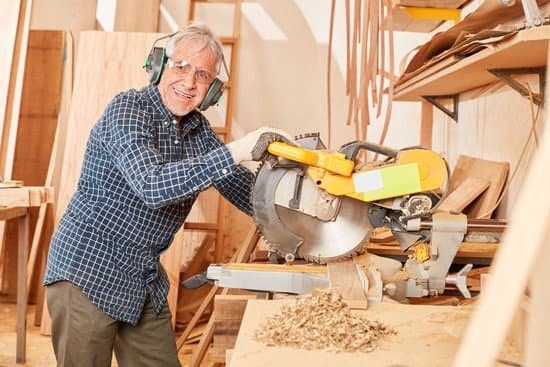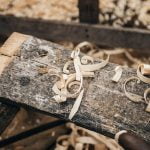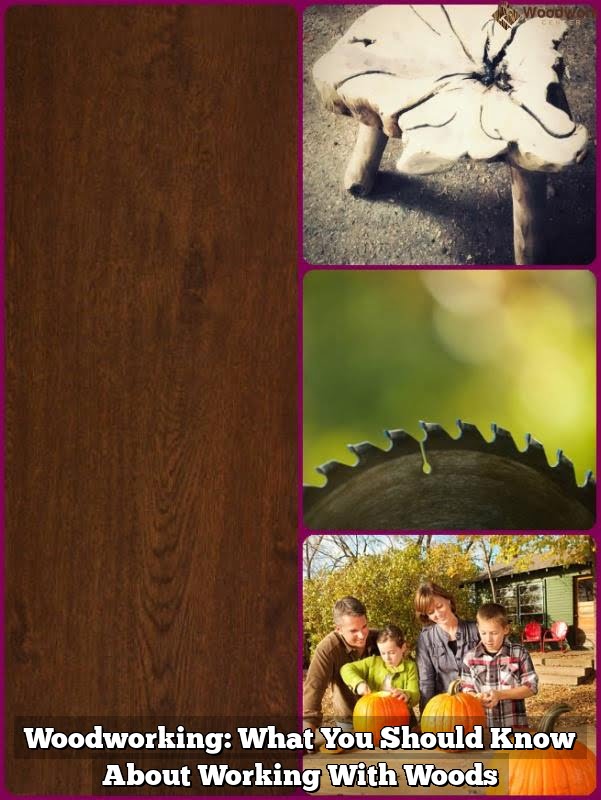Introduction to Soft Woods for Woodworking
Soft woods for woodworking have been around since ancient times. Used as early as the medieval period and all over Europe, these kinds of wood were used in everything from furniture to boats. Soft woods are not particularly dense and contain an abundance of sapwood at the center and heartwood in the outer portion which makes them easier to work with than harder woods. Pine and cedar are prime examples of soft woods that have been used extensively throughout time.
Soft woods are recognized for their easy malleability and reasonable cost, making them attractive to both artisans and enthusiasts alike involved in any range of projects such as tables, cabinets, carving, paneling, or other decorating items like shelving or picture frames. More modern uses include inlayed pieces or accents around doorways and windowsills.
Due to its widespread use throughout history, it is no surprise that so many modern day crafts replicate some design from this traditional wood selection fabrications. Whether you choose contemporary or classic designs using soft wood rests solely on your taste in style but be prepared to find the scent of natural oils emanating from these more gentle types of wood can provide a wonderfully peaceful atmosphere when working on projects.
Types of Soft Woods
Soft woods are often favored in woodworking because of their easy availability and low cost. Pine, fir, redwood, cedar, cypress, spruce, hemlock, and Douglas fir are some of the most common soft woods used for woodworking. Pine is the least expensive type of softwood. It is available in an array of colors ranging from light creamy yellow to deep reddish-browns. Fir is slightly more expensive than pine but is generally easier to work with and ideal for making furniture due to its strength and durability. Redwood has a distinctive dark red color. Cedar has a similar color palette but lacks the structural strength of fir. Cypress offers a softer texture than other softwoods and has an attractive grain pattern that stands out when being used for outdoor projects such as decks or outdoor furniture pieces. Spruce has a fine grain texture that is great for painting over or staining in various colors. Hemlock has wide spaced grains that look great when stained or finished natural. Finally Douglas fir is the most costly of all softwoods but it offers superior strength and stability compared to other types available.
Preparation of Soft Woods
When prepping soft woods for woodworking it is important to consider the density, grain, tools needed and finishing options. Before you begin preparing the wood, make sure you inspect it for any knots as these can affect the outcome of your project.
Once you have inspected the wood, remove moisture from the surface by air drying or using a kiln. This will ensure that the final product won’t warp or check due to uneven drying.
Another important step in prepping soft woods is planing. This flattens out imperfections and ensures even grain direction throughout the board before beginning a project. Depending on the size of the boards you are working with it might also be necessary to joint them, back-saw them and finish with a table saw if there are any edges that need to be cut straight.
To maximize durability, use sandpaper in circular motion starting at a lower grade (100 grit) and leveling up until you reach 600 grit just before staining, sealing or painting. Check your tools often to detect any dullness while sanding as this may produce unfinished results on the board’s surface.
Finally, when staining soft woods, use a water- or oil-based stain depending on how effective each type will be with what type of wood you are working with; applying too much can damage the texture and even cause cracking over time so it’s always important to proceed cautiously when selecting stain choices and make sure they are applied correctly.
Advantages of Soft Woods
Softwoods are popular materials for woodworking, due to their affordability and flexibility. Soft woods are more accessible than hardwoods since they are more widely available, making them ideal for any budget. Additionally, softwoods are fairly easy to work with due to its malleability, which can give you the freedom to be creative with all kinds of projects. Furthermore, these woods tend to have an attractive natural appearance that allows the grain pattern to be easily seen and appreciated.
These versatile woods can also be stained a wide array of different colors using stains and dyes, allowing you to customize your project even further and make it truly unique. Further advantages include their lightweight nature, as they are much easier to transport than heavier varieties such as hard woods; this makes them a great option for intricate designing processes where moving the materials around is necessary. Furthermore, softwoods typically take less time to air dry when compared to hardwood alternatives which means you can get started on your project faster! Lastly their low density also makes them great insulators in many circumstances making them useful in construction or acoustic applications.
Disadvantages of Soft Woods
Soft woods have many advantages that make them popular for woodworking projects, but despite their popularity, there are some disadvantages worth considering. The first disadvantage to using soft woods is their poor strength, which makes them more prone to breakage and splintering than harder types of wood. This means that during a woodworking project, it is recommended to take extra care or use additional supports when using soft woods. Additionally, smaller parts on the project may need extra reinforcement in order to remain stable and secure over time.
Soft woods can also be more fragile than hard woods due to their tissue composition. This means it might be easier for them to suffer from dents or other signs of wear if handled roughly or subjected to heat or moisture. As a result, it is important to store softwood pieces properly so they do not become damaged before use and limit the amount of physical contact the pieces experience while still in their raw form.
Finally, softwoods can cost more due to having more waste material associated with them. When cutting up thicker pieces into thinner slices and parts, some of the material needs to be thrown out due its shape or size as it cannot contribute much towards the overall project. This increases cost and usually requires additional tools like orbital sanders in order to achieve a smoother finish on irregularly shaped surfaces such as those found on cheaply sourced soft Woods.
Finishing Soft Woods
Soft woods are often popular choices for woodworking projects. They can be easy to work with, carve, shape and sand. When it comes to finishing these woods, there are several techniques that can improve their appearance and protect them from damage. The most popular options include staining, sealing, grinding, and polishing.
Staining is a great way to add color to soft woods while still allowing the natural beauty of the wood grain to show through. Different types of staining can create unique boards that vary in depth and color intensity depending on how light or dark you choose to go with the stain. Many stains will contain a sealer as well, which adds protection against scratches and moisture damage.
Sealing soft woods involves applying a thin layer of sealant over the top of the wood after it has been stained or left natural. Sealing should be done regularly over time to maintain the strength and durability of the wood. This will help keep out dirt and moisture and prevent any further damage that could occur from spills or extended exposure to sunlight.
Grinding is another technique used in woodworking that allows you to shape hard edges into softer curves or more interesting patterns without drastically changing the color of your workpiece material. This technique can also help restore old wood surfaces by removing any discoloration due to age or wear-and-tear.
Lastly, polishing helps bring out the brilliant colors found in softwoods while creating a smooth finish that can help make them look more artistic. A variety of tools are available depending on your preferred look; ranging from coarse sandpaper for quick removal of imperfections, right up to high powered buffers for a glossy finish on cherry or mahogany furniture pieces. Polishing requires patience and practice but can yield beautiful results when done correctly!
Projects with Soft Woods
Soft woods, such as pine and poplar, are common choices for a variety of woodworking projects. Pine is an excellent wood for building frames, posts and joinery pieces, while poplar should be your go-to choice when making cabinets or furniture. Both woods are known for their ease of cutting and working with power tools and saws.
To ensure success when working with soft woods like pine and poplar there are a few tricks to keep in mind: firstly make sure you use sharp blades and cutting edges; this way you can make cleaner cuts with fewer tears or splinters being created. When using power tools, control the speed accordingly so as not to overload the tool; this will maximize effectiveness while also increasing quality. Lastly don’t forget to pre-drill holes before nailing or screwing together; this prevents splitting which can occur if trying to nail directly into the wood.
Examples of projects that typically require soft woods include bookshelves, toy chests and window frames. If you’re comfortable working with power tools or have access to a table saw then there isn’t much limitation here ” almost any project that calls for structural components such as frames or struts can be created using softwoods. Alternatively softer woods are great candidates for carving projects such as figurines; the finer grain reduces visible sanding marks while providing more vivid final contours compared to harder woods like oak or walnut.
Conclusion
Soft woods, such as pine and other conifers, have become increasingly popular over recent years for their aesthetics and affordability. The cost of soft woods tends to be lower than hardwoods. This makes them ideal for crafting projects that would otherwise require a more expensive material, like oak or mahogany. Their lighter weight also makes them easier to handle, particularly when used in cabinetry or chairs. Additionally, many species of soft wood offer greater elasticity than hardwoods which can provide increased flexibility in certain applications like bentwood furniture designs.
Despite these advantages there are some potential drawbacks that must be considered when selecting materials for any project. Soft woods contain significantly less resin than hardwoods making them prone to splitting and warping over time if not properly sealed or cured. It is important to select the correct type of wood when working on delicate items such as cabinetry since soft woods can often chip or crack with the slightest misstep while using hand tools. Furthermore, knotting can be pervasive in particular varieties of soft wood which can affect the finished product’s appearance unless it is properly filled and sealed properly.
Despite these potential issues nevertheless many highly skilled craftsmen have been able to successfully use soft woods as their primary material in a wide variety of projects ranging from small indoor pieces such as picture frames and boxes, to larger outdoor items like playsets and garden furniture. When employed correctly with an eye for detail slightly more vulnerable types of soft wood can produce stunning results; this is especially true when utilizing harder varieties such as yellow pine in contrast to softer flora such as fir or spruce.

Hi everyone! I’m a woodworker and blogger, and this is my woodworking blog. In my blog, I share tips and tricks for woodworkers of all skill levels, as well as project ideas that you can try yourself.





